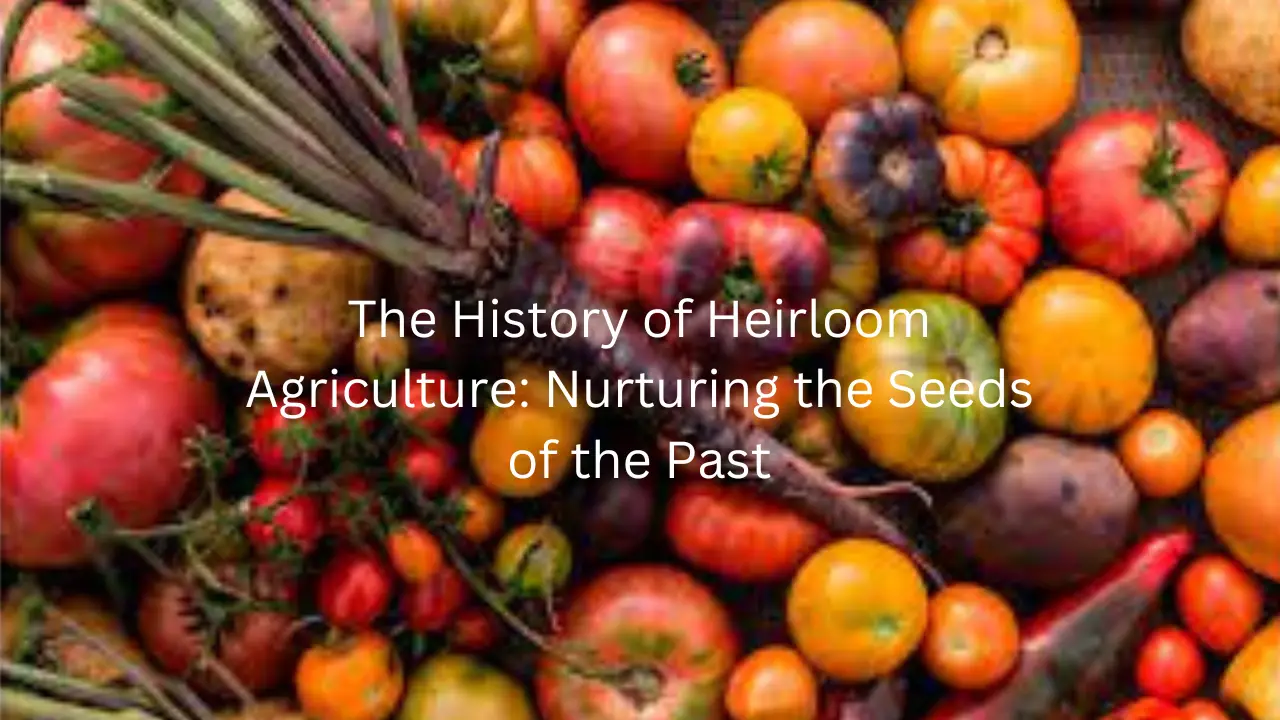
MAGJIUKE Trump Vance 2024 Yard Sign, Donald Trump President JD Vance Vice President 2024 Yard Signs, 18 "X 12" Double-Sided MAGA Sign, Metal H-Shaped Stake, Red And Blue 2-Pack
15% OffThe History of Heirloom Agriculture: Nurturing the Seeds of the Past
In the ever-evolving landscape of agriculture, where modern farming techniques and genetically modified crops dominate the scene, there exists a cherished and timeless tradition – heirloom agriculture. This article takes you on a journey through the captivating history of heirloom agriculture, uncovering the roots of this practice and its enduring significance in today’s world.
The Origins of Heirloom Agriculture
Seeds of Heritage
Heirloom agriculture traces its roots back to ancient civilizations, where seeds were not merely commodities but cherished treasures. These seeds were carefully passed down from generation to generation, imbued with stories and cultural significance. The practice of saving and sharing seeds allowed communities to adapt to their unique environments, fostering a rich tapestry of crop diversity.
The Rise of Modern Agriculture
As industrialization swept across the world, traditional farming practices were often overshadowed by the allure of higher yields and profit margins. The advent of hybrid seeds and monoculture farming led to a decline in heirloom varieties, as they were gradually replaced by more commercially viable options.
The Renaissance of Heirloom Agriculture
The Seed Savers
In the late 20th century, a dedicated group of individuals emerged as champions of heirloom agriculture. Organizations like the Seed Savers Exchange in the United States and the Heritage Seed Library in the United Kingdom tirelessly worked to preserve and propagate heirloom varieties. Their efforts rekindled interest in these ancient seeds.
Biodiversity and Resilience
Heirloom crops are celebrated for their diversity, resilience, and unique flavors. Unlike their modern counterparts, which are bred for uniformity and transportability, heirlooms come in various shapes, sizes, and colors. This biodiversity not only contributes to culinary delight but also enhances the ecosystem’s resilience.
Heirloom Agriculture Today
A Growing Movement
Today, the heirloom agriculture movement is thriving. Farmers, gardeners, and food enthusiasts are embracing heirloom varieties for their exceptional taste and cultural significance. Farmers’ markets and community-supported agriculture (CSA) programs have become hubs for heirloom produce.
Sustainability and Beyond
Heirloom agriculture aligns with the principles of sustainability. These crops require less synthetic input, promote healthier soils, and reduce the carbon footprint of agriculture. As the world grapples with the challenges of climate change and food security, heirloom crops offer a ray of hope.
Conclusion
The history of heirloom agriculture is a testament to humanity’s deep connection with the land and the wisdom of past generations. These seeds carry not only the promise of nourishing our bodies but also the stories of our ancestors. Embracing heirloom agriculture today is not just a culinary choice; it’s a celebration of our heritage and a step towards a more sustainable future.
FAQs
1. What defines an heirloom crop?
An heirloom crop is typically an open-pollinated variety that has been passed down for generations, often with cultural or historical significance. These seeds are cherished for their unique characteristics and flavors.
2. Are heirloom crops more difficult to grow than modern varieties?
Heirloom crops may require more care and attention than modern hybrids, as they are adapted to specific environments and may have different growth habits. However, many find the effort to be rewarding due to the exceptional taste and biodiversity they offer.
3. How can I get involved in heirloom agriculture?
You can start by seeking out heirloom seeds from local seed libraries, joining community gardens, or supporting farmers’ markets that prioritize heirloom produce. You can also learn about seed-saving techniques to contribute to the preservation of heirloom varieties.
4. Are heirloom crops more expensive than conventional produce?
The cost of heirloom produce can vary, but it is often on par with or slightly higher than conventionally grown crops. However, many enthusiasts are willing to pay a premium for the unique flavors and cultural significance of heirloom varieties.
5. Can heirloom agriculture help address food security issues?
Heirloom agriculture contributes to food security by promoting biodiversity and resilience in the face of changing climates. The diverse range of crops can be valuable in times of crisis when certain varieties may perform better than others.
In summary, heirloom agriculture is more than just a method of growing crops; it’s a testament to our connection with the past and a promising path towards a sustainable future. By preserving and celebrating heirloom varieties, we honor the legacy of those who came before us and pave the way for generations to come.











